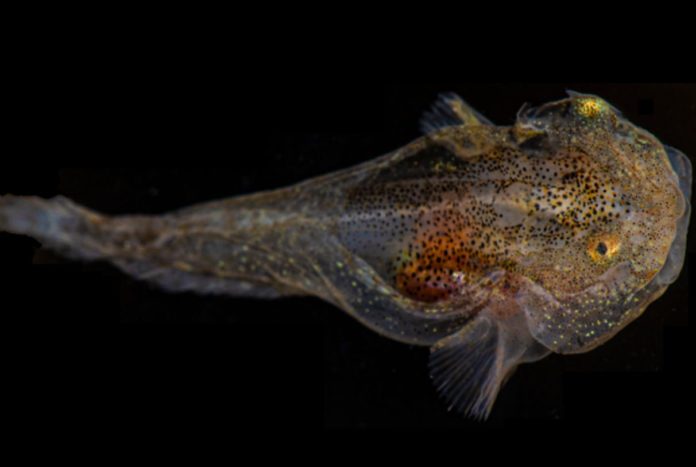A study on snailfish finds the greatest levels of antifreeze protein expression yet observed, highlighting the significance of special adaption to subzero environments and suggesting that biodiversity may be changing as ice caps warm.
A new study based on an excursion to the frigid seas off the coast of Greenland reveals exceptionally high levels of antifreeze proteins in a species of microscopic snailfish, highlighting the significance of this particular adaption to living in subzero temperatures.
The study, led by experts from the American Museum of Natural History and the City University of New York (CUNY) and published today in the journal Evolutionary Bioinformatics, also cautions that rising Arctic water temperatures could endanger these highly specialized fishes.
According to David Gruber, a research associate at the Museum and renowned biology professor at CUNY’s Baruch College, “Similar to how antifreeze in your car keeps the water in your radiator from freezing in cold temperatures, some animals have evolved amazing machinery that prevents them from freezing, such as antifreeze proteins, which prevent ice crystals from forming.
“We already knew that this tiny snailfish, which lives in extremely cold waters, produced antifreeze proteins, but we didn’t realize just how chock-full of those proteins it is—and the amount of effort it was putting into making these proteins.”
Polar oceans’ ice waters present a harsh environment for marine life, including only species equipped with the necessary defenses against subfreezing temperatures.
Fishes cannot tolerate even partial freezing of their bodily fluids, unlike other species of reptiles and insects. As a result, they are dependent on antifreeze proteins, which are predominantly generated in the liver, to stop the production of big ice grains inside their cells and body fluids.
Since scientists first learned that fishes can produce these specialized proteins roughly 50 years ago, they have discovered that antifreeze proteins are produced by five distinct gene families.
Gruber and his co-author John Sparks, a curator in the Department of Ichthyology at the Museum, were intrigued by the juvenile variegated snailfish, Liparis gibbus, and decided to look into its antifreeze proteins after learning about another remarkable trait known as biofluorescence.
A juvenile variegated snailfish that was shimmering in green and red was discovered by Sparks and Gruber in 2019 while they were studying the iceberg habitats off the coast of Eastern Greenland as part of a Constantine. S. Niarchos Expedition.
Snailfish are the only polar fish known to have biofluorescence, which is the ability to transform blue light into green, red, or yellow light. It is uncommon in Arctic fishes because of the region’s protracted periods of darkness.
Further research on the biofluorescent characteristics of snailfish led to the discovery of two distinct gene families that code for antifreeze proteins.
The snailfish genes have the greatest antifreeze protein expression levels ever seen, underscoring their significance to these creatures’ survival and raising concerns about how they would fare in a warming world.
According to some projections, if Arctic sea ice decrease continues at its current rate, the Arctic Ocean will be mostly ice-free in the summer within the next three decades.
“Since the mid-20th century, temperatures have increased twice as fast in the Arctic as in mid-latitudes,” adds Sparks.
“Arctic seas do not support a high diversity of fish species, and our study hypothesizes that with increasingly warming oceanic temperatures, ice-dwelling specialists such as this snailfish may encounter increased competition by more temperate species that were previously unable to survive at these higher northern latitudes.”
Image Credit: Getty
You were reading: Greenlandic Snailfish Has The Highest Expression Levels Of Antifreeze Proteins, Finds New Study
